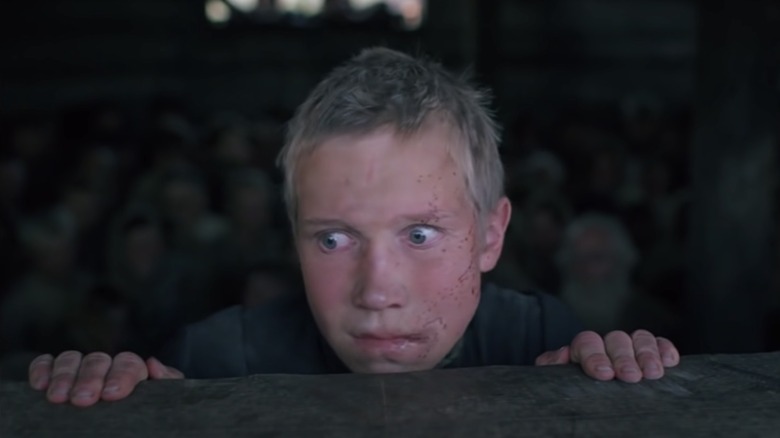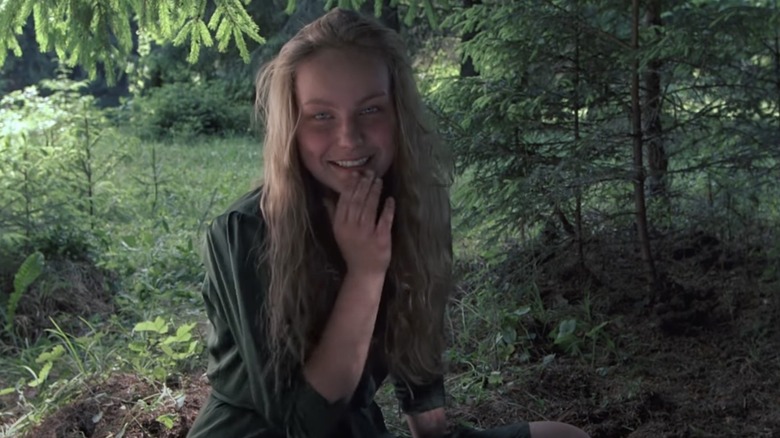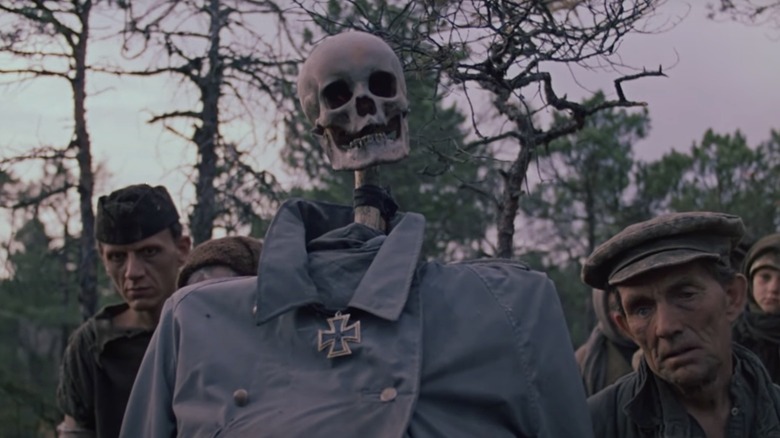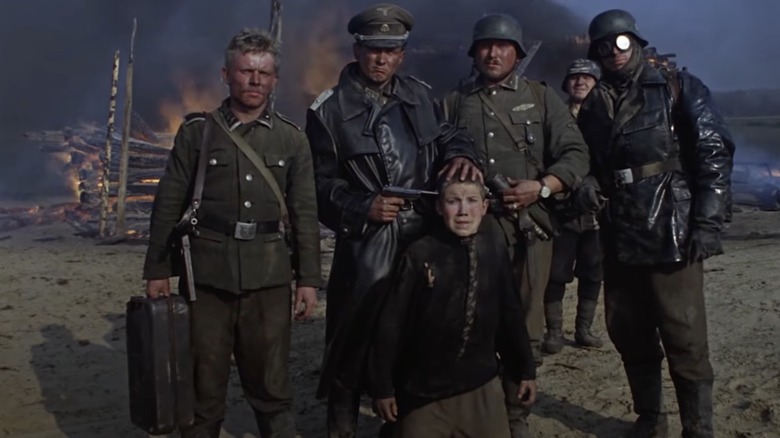The Daily Stream: Come And See Is The Most Harrowing Anti-War Film Ever Made
(Welcome to The Daily Stream, an ongoing series in which the /Film team shares what they've been watching, why it's worth checking out, and where you can stream it.)
The Movie: "Come and See"
Where You Can Stream It: The Criterion Channel, YouTube (free via the official production company, Mosfilm)
The Pitch: A naive teen joins up with the resistance movement in Nazi-occupied Belarus, only to be cast loose amid the horrors of war in Elim Klimov's visceral 1985 nightmare odyssey.
Amid the ongoing Russian invasion of Ukraine, a Soviet anti-war film described by its late director as "a plea for peace" seems like a relevant reminder of the suffering once caused by false liberators in the same region. Just recently, a Russian paratrooper became the first soldier in the country's military to flee to an undisclosed location and speak out against the invasion in the global press. In an interview with CNN, he said that he and his fellow soldiers "understood that we were dragged into a serious conflict where we are simply destroying towns and not actually liberating anyone."
It almost sounds like a description of what happens at the end of "Come and See," which draws from the real-life burning of over 600 Belarusian villages to tell a surreal, hellish story of survival against the backdrop of World War II. At the risk of proving Godwin's law right, this is a movie that rewinds through real archive footage as a traumatized teen, Flyora (Aleksei Kravchenko), unloads his rifle on a portrait of "Hitler the Liberator." It begins with Flyora strenuously pulling that weapon up from the sand, as if unearthing a piece of buried history to be used as a prop as the cycle of human events comes round to war again.
Why it's essential viewing
Building backward from the idea that "Every war movie is an anti-war movie," "Come and See" is one of the most intense war movies you'll ever see. Cinematographer Roger Deakins, who earned one of his two Oscars (and 15-lifetime nominations) for the quasi-one-shot wonder "1917," has often cited "Come and See" as a favorite, and he devoted the 100th episode of his Team Deakins podcast to a conversation with the film's cinematographer, Alexey Rodionov, who also lensed the Virginia Woolf adaptation "Orlando," starring Tilda Swinton.
One of the most striking aspects of the cinematography in "Come and See" is how it remains true to its title (pulled from the Book of Revelation) and invites the viewer into the film as an active witness. The film is intimate in its despair at the folly of war. In the same way that "The Silence of the Lambs" used POV shots to impart empathy, characters in "Come and See" are constantly looking right at the camera and into your very soul. Rodionov also operated his own Steadicam, putting the audience on the ground, for instance, behind the resistance fighters in the forest, so that it feels like you are getting swept up in their march.
In the opening scene, a village elder turns, briefly looks the viewer in the eye, and says, "Digging again? Well, go on digging, you little bastards." It's as if he's telling humanity to keep digging its own grave. As Flyora excavates his rifle, it cuts to an aerial shot of him and another boy from a reconnaissance plane that's flying overhead, and the film will return to that image of the plane more than once. It has the same impassive, bird's-eye view of them that we have of human history.
A scarecrow at the historical crossroads
In "Come and See," Flyora's mother begs him not to leave home, but the smiley young man reasons that everybody's going off to war, so he must do so, too. Early on, the resistance fighters, Soviet partisans, pose for a group photo where it's all fun and games. They sing about "the people's war, a Sacred War" where men will "rise up for a fight to the death against the dark fascist forces."
By the end, we'll see an entirely different kind of group photo where Flyora is knelt on the ground with a gun to his head as a building burns behind him. There is no great military objective, a noble mission like "Saving Private Ryan," in "Come and See." Instead, the film becomes a series of small personal objectives for Flyora as he weathers the wanton destruction and senseless killings around him.
Evade the dive bombings—and paratroopers, these ones German. Wade across the bog to the island where your family might be. Help set up a Nazi effigy (a scarecrow with a skull head and body rigged with explosives) at a crossroads. Steal a cow, dodge machine gun fire, steal a horse. Pose as a villager. Do whatever it takes to survive.
The same elder who warned Flyora about digging up the rifle turns up later, badly burned after being covered in petrol. Toward the end, as "Come and See" enters a thick fog on a motorcycle, it begins to feel like a landlocked version of "Apocalypse Now." We even hear one of the same musical cues, Richard Wagner's "Ride of the Valkyries." People are herded like human cattle into a barn, where the unthinkable occurs.
Feel and know
"Come and See" hasn't always been widely available on home media. The DVD release of it went out of print, and it was only in 2020 that it underwent restoration and received a Blu-ray release through Criterion. The film is undeniably bleak, and some viewers might not want to subject themselves to that. But through it all, as we see Flyora's shellshocked face and others in extreme close-up, their gaze remains unflinching, as if challenging us to look away.
As much as movies might provide a much-needed escape from reality sometimes, the best ones also reflect it back, giving us something we can take away from them and apply to our own lives in the here and now. Watching a Russian anti-war film at a time when Russia is at war with its neighbor, a country led by the actor who dubbed Paddington's voice, is a sad yet sobering experience. It makes you realize how little things have changed and how easy it is for the banners and tiny human figurines in the never-ending war game on earth to simply change positions.
Co-written by Ales Adamovich, who really did fight as a child soldier in the Belarusian resistance, "Come and See" also fought censorship to get made. The film was shot in chronological order, using live ammunition, like some dangerous historical reenactment, but you can see that kind of thing in the news every day, too, as humanity goes on waging wars and repeating the same mistakes. "Come and See" wants you to feel and know what those who lived through war might have endured. It's an immersive cautionary tale, one that closes the distance between the viewer and headlines and history books and delivers a howl of anguish and rage to the face that can't be ignored.



